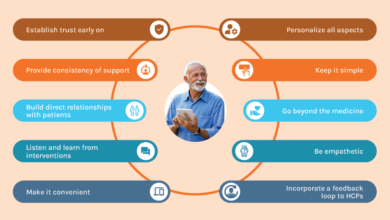Five Steps For Building Empathy in a High-Tech Healthcare World

In recent years, the landscape of healthcare has been transformed by technological innovations. From telemedicine consultations to AI-driven diagnostics and personalized medicine, these advancements have revolutionized patient care. However, as we navigate this new high-tech era, the importance of empathy remains steadfast. Despite the efficiency and capabilities that technology brings, the human touch—understanding and addressing the emotional experiences of patients—is still crucial.
Empathy, defined as the ability to understand and share the feelings of another, is a cornerstone of effective healthcare. It goes beyond mere sympathy, involving a genuine connection that fosters trust, encourages treatment adherence, and enhances patient satisfaction. Studies have consistently shown that when healthcare providers practice empathetic care, patients report better outcomes and a higher quality of life.
Challenges Posed by Technology
However, integrating technology into healthcare can sometimes create barriers to empathetic interactions. For instance, the time clinicians spend inputting data into electronic health records can detract from direct patient communication. Furthermore, the impersonal nature of some high-tech solutions can risk seeing patients as sets of data points rather than as individuals, potentially undermining the empathetic foundations of healthcare.
Nevertheless, technology, when used thoughtfully, can significantly enhance empathetic care. Telemedicine, for example, expands access to care for remote or underserved populations, allowing healthcare providers to express empathy across geographical boundaries. Similarly, AI and data analytics can personalize patient insights, which frees up time for healthcare professionals to engage more deeply with their patients. Moreover, wearable technologies that monitor health conditions enable patients to feel cared for on a continuous basis, enhancing the patient-provider relationship.
Integrating Empathy into High-Tech Care
To maximize the benefits of technology while preserving empathy, healthcare providers must receive training that emphasizes empathetic practices in conjunction with technological tools. For instance, simulation-based training can help providers learn how to maintain eye contact and engage in active listening, even while entering data into a computer. Additionally, the design of patient-centered technologies should involve input from patients to ensure these tools are accessible, user-friendly, and supportive of empathetic care.
Here are five specific steps to help ensure the integration of empathy in a high-tech care environment:
1. Training and Development
Goal: Equip healthcare providers with the skills to use technology empathetically.
Action: Implement regular training sessions that focus on integrating empathy into daily practices, even when using advanced technology. This could include role-playing exercises, empathy workshops, and scenario-based training that highlight the importance of understanding patient emotions and concerns.
2. Patient-Centered Technology Design
Goal: Ensure that technological tools enhance, not hinder, the patient-provider relationship.
Action: Involve patients in the design and testing phases of new health technologies. Feedback loops should be established where patients can express how the technology might better accommodate their emotional and medical needs.
3. Enhance Communication Skills
Goal: Foster a more empathetic communication style that transcends technological barriers.
Action: Train healthcare providers to maintain eye contact during patient interactions, even when entering data into electronic systems. Encourage the use of open-ended questions to better understand patient concerns and make them feel heard.
4. Integrate Real-Time Feedback Mechanisms
Goal: Use technology to provide immediate responses to patient queries or concerns.
Action: Implement systems like chatbots or virtual health assistants that are programmed to recognize emotional cues and respond empathetically. This can help patients feel supported at all times, especially outside of traditional office hours.
5. Regular Assessment and Adaptation
Goal: Continuously improve the empathetic use of technology based on real-world feedback and outcomes.
Action: Regularly evaluate the effectiveness of technological tools in fostering empathy through surveys and interviews with both patients and healthcare providers. Use this data to adapt and refine tools and practices continually.
Conclusion
By following these five steps for building more empathetic technology interventions, healthcare settings can ensure that their use of technology supports a compassionate, patient-centered approach to care, where empathy remains at the heart of all interactions. This approach not only improves patient satisfaction and adherence to treatments but also enhances the overall effectiveness of healthcare delivery.
As healthcare continues to evolve, the integration of empathy within high-tech solutions will be critical in ensuring these innovations truly benefit patients. The marriage of technology and empathy can lead to a more holistic approach to healthcare, where innovations enhance care without compromising the compassionate connections that are fundamental to healing.





